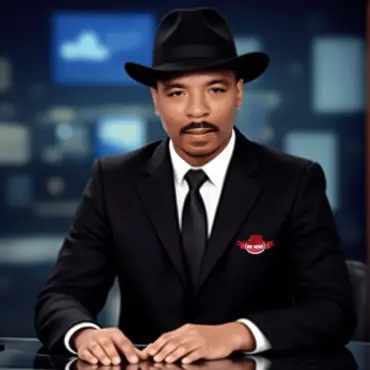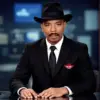
Political art serves as a powerful mirror reflecting society’s struggles, capturing the complexities of social and political issues. Through protest murals and activist installations, artists engage in visual storytelling, offering poignant social commentary on pressing matters.
These art movements often embody cultural resistance, challenging the status quo and inspiring collective action. You’ll find that expressive politics in political art not only provoke thought but also foster dialogue among communities.
By highlighting injustices and societal reflection, artists invite viewers to confront uncomfortable truths and envision alternatives. Political art can galvanize support for social change, showcasing the resilience and creativity of those affected by adversity.
Ultimately, it stands as a testament to the transformative power of art in addressing societal challenges.
Political art isn’t just a form of expression; it’s a mirror reflecting society’s deepest struggles. It challenges you to confront uncomfortable truths and question the status quo. As you explore its evolution and impact, consider how these artistic movements resonate with current issues. What happens when art becomes a battleground for social change? The answers might provoke more questions than you expect.

The Historical Context of Political Art
Political art has always thrived in times of social upheaval, as artists harness their creativity to challenge authority and provoke thought. When you dive into the historical context of political art, you’ll notice that it often intersects with significant historical movements, from the French Revolution to civil rights struggles. Each era’s artistic influences reflect the zeitgeist, capturing the anger, hope, and resilience of oppressed communities.
Consider how the Dada movement emerged as a response to World War I’s horrors, questioning traditional values and aesthetics.
Similarly, the Harlem Renaissance redefined cultural identity, emphasizing racial pride amid systemic oppression. The interplay between societal turmoil and artistic expression reveals how political art serves as both a mirror and a hammer, shaping public discourse.
Key Movements and Their Artistic Expressions
As artists respond to societal shifts, key movements in political art reveal the profound ways creativity can challenge the status quo. You’ll notice how protest aesthetics emerge as a powerful visual language, capturing the essence of dissent.
From the bold colors of the feminist art movement to the stark imagery of anti-war campaigns, artists utilize their craft to provoke thought and inspire action.
Activist symbolism plays a crucial role in these movements, embedding deeper meanings within their work. For instance, the raised fist signifies solidarity and resistance, while the use of everyday objects transforms mundane items into symbols of protest.
These artistic expressions don’t just reflect societal struggles; they actively engage viewers, inviting them to question norms and envision change.
As you explore these movements, consider how the interplay between art and activism shapes your understanding of contemporary issues and ignites a collective consciousness for justice.
The Role of Street Art in Activism
While society grapples with pressing issues, street art emerges as a dynamic and accessible form of activism that transforms public spaces into platforms for dialogue and dissent.
You’ll notice that street murals often convey powerful activist messaging, challenging the status quo and sparking conversation among diverse audiences.
This art form isn’t just about aesthetics; it’s a visceral response to social injustices, reflecting the frustrations and aspirations of marginalized communities.
Digital Media and the Evolution of Political Art

Emerging technologies have transformed how political art is created, distributed, and experienced, making it more accessible and impactful than ever before. You’ve likely noticed how digital platforms amplify voices that once struggled to be heard. These platforms allow artists to reach global audiences instantly, breaking down geographical barriers.
With artistic innovations like interactive video art and virtual reality, political themes become immersive experiences that challenge viewers’ perceptions and provoke critical thought. Instead of traditional canvases, you’re now witnessing art that evolves in real-time, reflecting societal changes and movements as they unfold.
This shift not only democratizes art but also empowers artists to engage directly with their audience, fostering dialogue and activism. As you explore this new landscape, consider how these developments reshape your understanding of political issues, urging you to participate in the conversation and inspire change through your own creative expression.
Notable Political Artists and Their Contributions
Political art has always served as a powerful lens through which you can examine societal issues, and notable artists across different eras have made significant contributions to this discourse. Consider artists like Diego Rivera, whose murals vividly reflect the struggles of the working class, or Ai Weiwei, who challenges authoritarianism through provocative installations. Each artist draws on unique artistic influences, blending traditional techniques with contemporary themes to engage viewers critically.
These creators don’t just present art; they offer cultural critiques that provoke thought and inspire action. For instance, Barbara Kruger’s text-based works confront consumerism and feminism, inviting you to question societal norms.
The Impact of Political Art on Public Perception
Art doesn’t just reflect society; it shapes how you perceive and engage with critical issues. Political art wields the power to influence public perception, often challenging your views on pressing matters. When you encounter a powerful piece, it can spark emotions, provoke thought, and catalyze conversation. This engagement doesn’t just happen passively; it invites you to question, to reflect, and to act.
Consider how a mural or a provocative performance can shift the narrative around social justice or environmental concerns. These artistic expressions create a dialogue that resonates deeply within communities, making complex issues accessible and relatable.
They can rally audiences, mobilizing collective action or fostering empathy in ways traditional discourse often fails. By tapping into your emotions and experiences, political art becomes a mirror reflecting societal struggles, compelling you to reconsider your stance and encouraging a more engaged, informed public.
In this way, it shapes not just perceptions but the very fabric of societal discourse.
Art as a Tool for Social Change

While many see art merely as a form of expression, it often serves as a catalyst for social change. You mightn’t realize how deeply artistic activism resonates within societal issues. Artists wield their creativity as a powerful tool, challenging norms and provoking thought.
Through striking visuals or poignant performances, they create cultural commentary that sparks dialogue and inspires action. Consider how murals can transform urban spaces into voices of resistance, or how provocative films can shine a light on injustices.
These forms of art don’t just reflect society; they actively engage with it, pushing you to confront uncomfortable truths. By intertwining aesthetics with activism, artists disrupt complacency, encouraging you to question the status quo.
Ultimately, art transcends mere decoration; it calls you to respond, to reflect, and to engage. As you navigate through life, recognize the potential of art to inspire change and reshape the narrative of our collective struggles.
Challenges Faced by Political Artists Today
As the landscape of political expression evolves, artists face a myriad of challenges that can stifle their voices and creativity. Censorship issues loom large, with governments and institutions often silencing dissenting opinions. You might find your work suppressed simply for challenging the status quo, limiting your ability to engage with critical societal issues.
Funding challenges further complicate matters; securing financial support can feel like navigating a minefield, as many sponsors shy away from controversial subjects. This pressure can force you to compromise your vision, undermining your artistic freedom.
Additionally, audience engagement is increasingly fragmented in today’s digital age. You may struggle to connect with a diverse audience that’s bombarded with content, making it hard to provoke meaningful conversations.
These obstacles demand resilience and innovation, as you strive to create impactful political art that resonates amidst the chaos.
The Future of Political Art in a Globalized World

In a world increasingly interconnected by technology and culture, the future of political art holds both promise and peril. As cultural globalization accelerates, you’ll witness artists from diverse backgrounds engaging in artistic collaboration, pooling unique perspectives to tackle pressing global issues.
This melting pot of ideas can lead to innovative expressions that resonate across borders, challenging oppressive systems and igniting movements.
However, this same globalization risks diluting local voices, as dominant narratives overshadow grassroots movements. You might find that while international platforms amplify certain messages, they can also homogenize the very essence of political art.
In navigating this complex landscape, you must critically assess which collaborations empower marginalized communities and which reinforce existing power dynamics.
The future of political art hinges on your ability to foster genuine dialogue and authenticity, ensuring that it remains a powerful tool for social change in a rapidly evolving world.

Conclusion
Political art isn’t just a reflection of society’s struggles; it’s a vital force for change. By challenging norms and sparking dialogue, artists compel us to confront uncomfortable truths about our world. As you engage with these works, consider how they resonate with your own experiences and beliefs. The future of political art lies in its ability to adapt and inspire, pushing boundaries while inviting us to rethink our roles in the ongoing fight for justice and equity.



